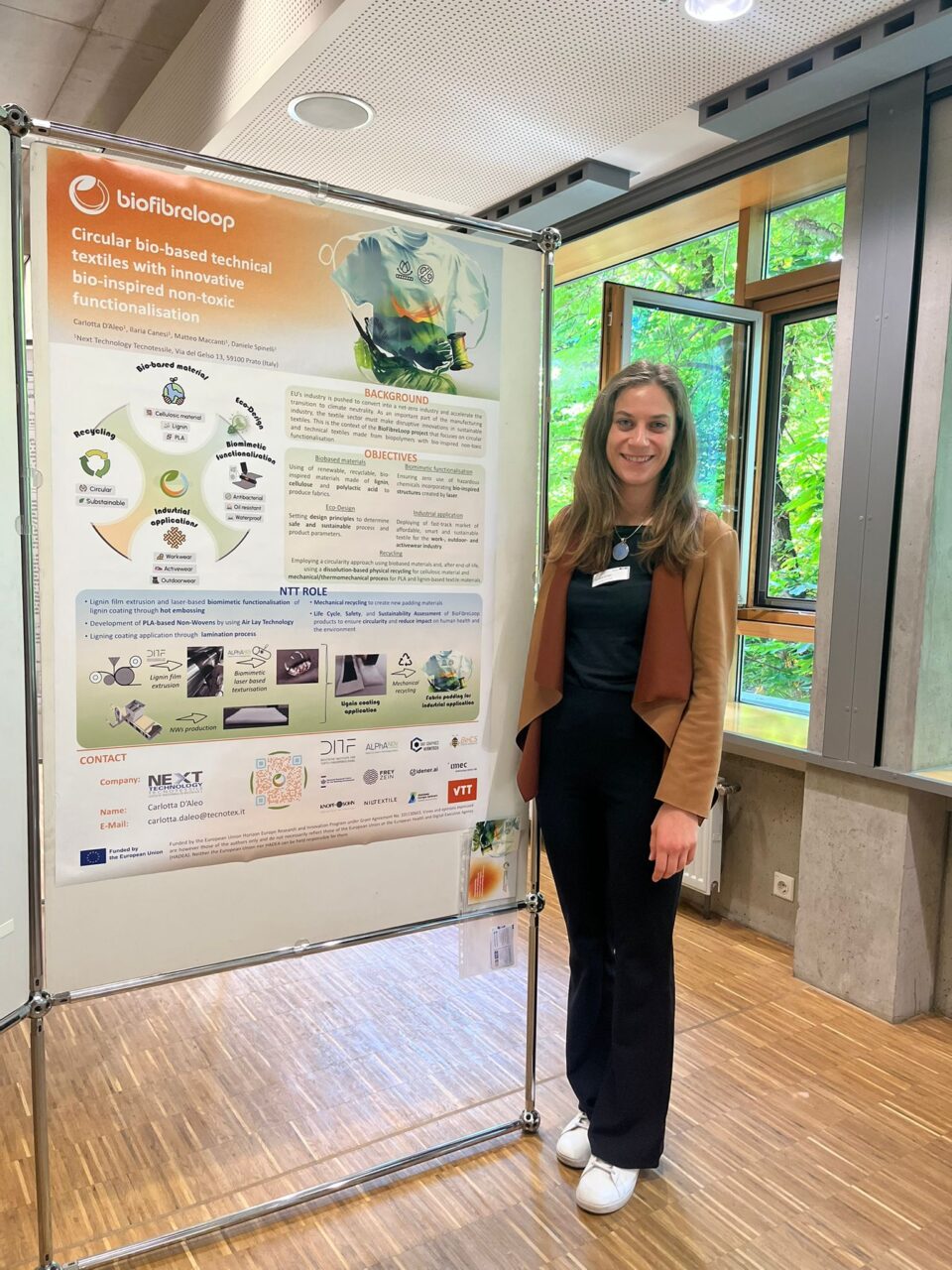The AUTEX 2025 World Conference, held in Dresden from 11th to 13th June, brought together international experts and key players in the textile sector to explore the most advanced developments in textile science and technology. The event provided valuable insights and fostered meaningful exchanges on key topics that are closely aligned with the mission of the BioFibreLoop project.
Among the various topics discussed, particular attention was given to recycling strategies, life cycle assessment (LCA), and concepts of sustainability and circularity — areas that represent fundamental pillars of the BioFibreLoop Project. Equally relevant were sessions dedicated to surface functionalisation and coatings, innovative dyeing technologies and systems, and the development of textile-based sensors and smart textiles.
Sustainability and Circularity
One of the most engaging points of discussion throughout the conference was the need to embed sustainability and circularity into every stage of the textile value chain. These themes resonate deeply with BioFibreLoop’s objectives, which focus on designing and producing bio-based and recyclable garments, reducing environmental impact, and promoting circular business models.
In particular, the concept of Eco Design generated significant interest. The ability to develop textile products by following a set of guidelines that integrate sustainability, durability, and recyclability from the early design phase is increasingly recognised as essential. Conference participants highlighted the strategic value of this approach, which not only improves environmental sustainability but also supports compliance with upcoming regulatory frameworks.
Additionally, assessing the environmental and social impact of the materials and products developed within BioFibreLoop emerged as a critical discussion point. The integration of LCA and s-LCA into the project workflow is seen as a best practice that ensures innovation aligns with both green transition and societal goals.
Scaling Innovation
A key strength of BioFibreLoop, widely acknowledged during interactions at the conference, is its capacity to scale up innovation beyond the laboratory. While many academic research efforts remain at low technology readiness levels (TRL), the BioFibreLoop consortium includes a strong partnership between textile industries and research and innovation institutes, enabling the project to target higher TRLs (up to TRL 7). This industrial integration represents a significant advantage, allowing the project to bridge the gap between research and real-world application, and accelerating the adoption of sustainable textile solutions in the market.




